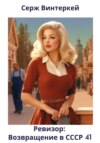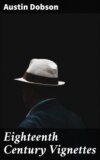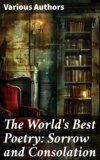Read the book: «Eighteenth Century Vignettes»
PREFACE TO THE FIRST EDITION OF 1892
Sixteen of the twenty papers comprised in this volume appeared in America; but only one of these – 'The Citizen of the World' – has been reprinted in England. Of the four papers remaining, one was published (in part) in the Saturday Review, and the other three in Longman's Magazine, the National Review, and the Library respectively. Where permission to reprint was required, it has been obtained; and it is hereby gratefully acknowledged.
With the exception of the last two, which are more general in character than the rest, the papers are now chronologically arranged. They do not by any means exhaust the list of subjects originally drawn up by their writer for the kind of episodical treatment at which they aim; and should these first experiments find a public, it is not impossible that they may be followed by a further collection.
The first series of 'Eighteenth Century Vignettes' was succeeded in 1894 by a second, and in 1896 by a third series. The second and third series were printed at the Chiswick Press; the first was printed from American plates. In issuing a second and revised edition of this first series, it has been thought desirable to print the book in England. It has also been extended by a further paper – 'At Leicester Fields.' This originally appeared in the English Illustrated Magazine for August, 1886, but has now been corrected to date and very materially enlarged.
I. EIGHTEENTH CENTURY VIGNETTES
ON the 19th of May, 1708, Her Majesty Queen Anne being then upon the throne of Great Britain and Ireland, a coach with two horses, gaudy rather than neat in its appointments, drew up at the door of my Lord Sunderland's Office in Whitehall. It contained a lady about thirty, of considerable personal attractions, and dressed richly in cinnamon satin. She was a brunette, with a rather high forehead, the height of which was ingeniously broken by two short locks upon the temples. Moreover, she had distinctly fine eyes, and a mouth which, in its normal state, must have been arch and pretty, but was now drawn down at the corners under the influence of some temporary irritation. As the coach stopped, a provincial-looking servant promptly alighted, pulled out from the box-seat a large case of the kind used for preserving the voluminous periwigs of the period, and subsequently extracted from the same receptacle a pair of shining new shoes with square toes and silver buckles. These, with the case, he carried carefully into the house, returning shortly afterwards. Then ensued what, upon the stage, would be called 'an interval' during which time the high forehead of the lady began to cloud visibly with impatience, and the corners of her mouth to grow more ominous. At length, about twenty minutes later, came a sound of laughter and noisy voices; and by-and-by bustled out of the Cockpit portal a square-shouldered, square-faced man in a rich dress, which, like the coach, was a little showy. He wore a huge black full-bottomed periwig. Speaking with a marked Irish accent, he made profuse apologies to the occupant of the carriage – apologies which, as might be expected, were not well received. An expression of vexation came over his good-tempered face as he took his seat at the lady's side, and he lapsed for a few minutes into a moody silence. But before they had gone many yards, his dark, deep-set eyes began to twinkle once more as he looked about him. When they passed the Tilt-Yard a detachment of the Second Troop of Life Guards, magnificent in their laced red coats, jack boots, and white feathers, came pacing out on their black horses. They took their way towards Charing Cross, and for a short distance followed the same route as the chariot. The lady was loftily indifferent to their presence; and she was, besides, on the further side of the vehicle. But her companion manifestly recognized some old acquaintances among them, and was highly gratified at being recognized in his turn, although at the same time it was evident he was also a little apprehensive lest the 'Gentlemen of the Guard,' as they were called, should be needlessly demonstrative in their acknowledgment of his existence. After this, nothing more of moment occurred. Slowly mounting St. James's Street, the coach turned down Piccadilly, and, passing between the groups of lounging lackeys at the gate, entered Hyde Park. Here, by the time it had once made the circuit of the Ring, the lady's equanimity was completely restored, and the gentleman was radiant. He was, in truth, to use his own words, 'no undelightful Companion.' He possessed an infinite fund of wit and humour; and his manner to women had a sincerity of deference which was not the prevailing characteristic of his age.
There is but slender invention in this little picture. The gentleman was Captain Steele, late of the Life Guards, the Coldstreams, and Lucas's regiment of foot, now Gazetteer, and Gentleman Waiter to Queen Anne's consort, Prince George of Denmark, and not yet 'Mr. Isaac Bickerstaff' of the immortal 'Tatler.' The lady was Mrs. Steele, née Miss Mary Scurlock, his 'Ruler' and 'absolute Governesse' (as he called her), to whom he had been married some eight months before. If you ask at the British Museum for the Steele manuscripts (Add. MSS. 5,145, A, B, and C), the courteous attendant will bring you, with its faded ink, dusky paper, and hasty scrawl, the very letter making arrangements for this meeting ('best Periwigg' and 'new Shoes' included), at the end of which the writer assures his 'dear Prue' (another pet name) that she is 'Vitall Life to YT Oblig'd Affectionate Husband & Humble Sernt Richd Steele.' There are many such in the quarto volume of which this forms part, written from all places, at all times, in all kinds of hands. They take all tones; they are passionate, tender, expostulatory, playful, dignified, lyric, didactic. It must be confessed that from a perusal of them one's feeling for the lady of the chariot is not entirely unsympathetic. It can scarcely have been an ideal household, that 'third door right hand turning out of Jermyn Street,' to which so many of them are addressed; and Mrs. Steele must frequently have had to complain to her confidante, Mrs. (or Miss) Binns (a lady whom Steele is obviously anxious to propitiate), of the extraordinary irregularity of her restless lord and master. Now a friend from Barbados has stopped him on his way home, and he will come (he writes) 'within a Pint of Wine;' now it is Lord Sunderland who is keeping him indefinitely at the Council; now the siege of Lille and the proofs of the 'Gazette' will detain him until ten at night. Sometimes his vague 'West Indian business' (that is, his first wife's property) hurries him suddenly into the City; sometimes he is borne off to the Gentleman Ushers' table at St. James's. Sometimes, even, he stays out all night, as he had done not many days before the date of the above meeting, when he had written to beg that his dressing-gown, his slippers, and 'clean Linnen' might be sent to him at 'one Legg's,' a barber 'over against the Devill Tavern at Charing Crosse,' where he proposes to lie that night, chiefly, it has been conjectured from the context, in order to escape certain watchful 'shoulder-dabbers' who were hanging obstinately about his own mansion in St. James's. For – to tell the truth – he was generally hopelessly embarrassed, and scarcely ever without a lawsuit on his hands. He was not a bad man; he was not necessarily vicious or dissolute. But his habits were incurably generous, profuse, and improvident; and his sanguine Irish nature led him continually to mistake his expectations for his income. Naturally, perhaps, his 'absolute Governesse' complained of an absolutism so strangely limited. If her affection for him was scarcely as ardent as his passion for her, it was still a genuine emotion. But to a coquette of some years' standing, and 'a cried-up beauty' (as Mrs. Manley calls her), the realities of her married life must have been a cruel disappointment; and she was not the woman to conceal it. 'I wish,' says her husband in one of his letters, 'I knew how to Court you into Good Humour, for Two or Three Quarrells more will dispatch me quite.' Of her replies we have no knowledge; but from scattered specimens of her style when angry, they must often have been exceptionally scornful and unconciliatory. On one occasion, where he addresses her as 'Madam,' and returns her note to her in order that she may see, upon second thoughts, the disrespectful manner in which she treats him, he is evidently deeply wounded. She has said that their dispute is far from being a trouble to her, and he rejoins that to him any disturbance between them is the greatest affliction imaginable. And then he goes on to expostulate, with more dignity than usual, against her unreasonable use of her prerogative. 'I Love you,' he says, 'better than the light of my Eyes, or the life-blood in my Heart but when I have lett you know that, you are also to understand that neither my sight shall be so far inchanted, or my affection so much master of me as to make me forgett our common Interest. To attend my businesse as I ought and improve my fortune it is necessary that my time and my Will should be under no direction but my own.' Clearly his bosom's queen had been inquiring too closely into his goings and comings. It is a strange thing, he says, in another letter, that, because she is handsome, he must be always giving her an account of every trifle, and minute of his time. And again – 'Dear Prue, do not send after me, for I shall be ridiculous:' It had happened to him, no doubt. 'He is governed by his wife most abominably, as bad as Marlborough,' says another contemporary letter-writer. And we may fancy the blue eyes of Dr. Swift flashing unutterable scorn as he scribbles off this piece of intelligence to Stella and Mrs. Dingley.
In the letters which follow Steele's above-quoted expostulation, the embers of misunderstanding flame and fade, to flame and fade again. A word or two of kindness makes him rapturous; a harsh expression sinks him to despair. As time goes on, the letters grow fewer, and the writers grow more used to each other's ways. But to the last Steele's affectionate nature takes fire upon the least encouragement. Once, years afterwards, when Prue is in the country and he is in London, and she calls him 'Good Dick,' it throws him into such a transport that he declares he could forget his gout, and walk down to her at Wales. 'My dear little peevish, beautiful, wise Governess, God bless you,' the letter ends. In another he assures her that, lying in her place and on her pillow, he fell into tears from thinking that his 'charming little insolent might be then awake and in pain'-.with headache. She wants flattery, she says, and he flatters her. 'Her son,' he declares, 'is extremely pretty, and has his face sweetened with something of the Venus his mother, which is no small delight to the Vulcan who begot him.' He assures her that, though she talks of the children, they are dear to him more because they are hers than because they are his own. 1
And this reminds us that some of the best of his later letters are about his family. Once, at this time of their mother's absence in Wales, he says that he has invited his eldest daughter to dinner with one of her teachers, because she had represented to him 'in her pretty language that she seemed helpless and friendless, without anybody's taking notice of her at Christmas, when all the children but she and two more were with their relations.' So now they are in the room where he is writing. 'I told Betty,' he adds, 'I had writ to you; and she made me open the letter again, and give her humble duty to her mother, and desire to know when she shall have the honour to see her in town.' No doubt this was in strict accordance with the proprieties as practised at Mrs. Nazereau's polite academy in Chelsea; but somehow one suspects that 'Madam Betty' would scarcely have addressed the writer of the letter with the same boarding-school formality. 'Elsewhere the talk is all of Eugene, the eldest boy. 'Your son, at the present writing, is mighty well employed in tumbling on the floor of the room and sweeping the sand with a feather. He grows a most delightful child, and very full of play and spirit. He is also a very great scholar: he can read his Primer; and I have brought down my Virgil. He makes most shrewd remarks upon the pictures. We are very intimate friends and play-fellows.' Yes: decidedly Steele's children must have loved their clever, faulty, kindly father.
II. PRIOR'S 'KITTY.'
IN the year 1718, and presumably after Mr. Matthew Prior had already printed his tall and extremely miscellaneous folio of 'Poems on Several Occasions,' there was published separately a little jeu d'esprit by the same 'eminent Hand,' which has not been regarded as the least fortunate of his efforts. In its first fugitive form, now so rare as to be known only to a few highly-favoured collectors, it is a single page or leaf of eight quatrains; and of this there are two issues, both attributing the verses to Prior, both claiming to be authentic, both unauthorised. The earlier, which is dated, is headed 'Upon Lady Katherine H – des first appearing at the Play-House in Drury-Lane;' the other, 'from Curll's chaste press,' bears the title of 'The Female Phaeton,' by which the piece is now known. The person indicated was the second daughter of Henry Hyde, Earl of Clarendon and Rochester, and the grandchild of the great Lord Chancellor and historian of the Rebellion. As she was born in 1700, she must at this time have been eighteen. She was 'beautiful,' says the poet; 'she was wild as Colt untam'd;' she was, besides,
'Inflam'd with Rage at sad Restraint,
Which wise Mamma ordain'd.'
Her elder sister, Jane – the 'blooming Hide, with Eyes so rare,' of whom John Gay had sung in the 'Prologue' to 'The Shepherd's Week' – was already married to the Earl of Essex. Why should not She, too, be a Toast, and 'bring home Hearts by Dozens'?
'Dearest Mamma, for once let me,
Unchain'd, my Fortune try;
I'll have my Earl, as well as She,
Or know the Reason why.'
And so the stanzas, eternally human and therefore eternally modern, dance and sparkle to their natural ending:
'Fondness prevail'd, Mamma gave way;
Kitty, at Heart's Desire,
Obtains the Chariot for a Day,
And set the World on Fire.'
Apart from the reference to Drury Lane Theatre supplied by the title, there is no clue to the incident recorded. But two years after Prior wrote these playful verses, which were sent to the lady through Mr. Harcourt, Catherine Hyde verified her poet's words by securing a suitor of even higher rank than her sister's husband. In March, 1720, she married Charles Douglas, third Duke of Queensberry, an amiable and accomplished nobleman, who, it has been hinted, must sometimes have been considerably 'exercised' by the vagaries of the charming but impetuous 'child of Nature' whom he had selected for his helpmate. Indeed, despite her ability, many of her less sympathetic contemporaries did not scruple to suggest that her Grace's eccentricities almost amounted to a touch of insanity. Bolingbroke called her 'Sa Singularité;' Walpole spoke of her roundly as 'an out-pensioner of Bedlam.' But neither the Abbot of Strawberry nor Pope's 'guide, philosopher, and friend' had any right to set up for a Forbes-Winslow or a Brouardel; and there is in reality little more in what is related of her than might be expected of one who, at once a spoiled child, a beauty, and a woman of parts, deliberately revolted against the tyrannous conventionalities of her time. To the last she persistently declined, as she told Swift, to 'cut and curl her hair like a sheep's head,' in accordance with the reigning fashion; and she affected in her dress a simplicity and youthfulness which nothing but the good looks she contrived to retain so long, could possibly have justified. She had a fancy for idyllic travesties, appearing now as a shepherdess, now as a peasant, now as a milkmaid. 2
Upon one occasion she scandalized the court-usher soul of Horace Walpole by masquerading at St. James's in a costume of red flannel. As a rule, she carried her innovations triumphantly; but now and then she was forced to yield to a will more imperative than her own. Once the fantastic old King of Rath tore off her favourite white apron in the Pump Room, flinging it contemptuously among the 'waiting gentlewomen' in the hinder benches. 'None but abigails wore white aprons,' he declared; and the grande dame de par la monde made a virtue of necessity, and submitted. In her own entertainments, however, she seems to have been as despotic as Nash, insisting that people should come early and leave early, and declining to provide the profuse refreshments then expected. High-spirited and whimsical no doubt she was; but the stories told of her are probably exaggerated. Those who praise her, praise her unreservedly. Her character was unblemished. She was truthful; she was honest; she was not a flatterer. And she was certainly fearless, for she dared, even in the rudimentary epoch of the two-pronged fork, to rally the terrible Dean of St. Patrick's for that deplorable habit – so justly deprecated by the Historian of Snobs – of putting his knife in his mouth. When she saw any one 'administer the cold steel,' as Thackeray calls it, she would shriek out in affected terror lest they should do themselves a mischief. She seems, although they never really met after her girlhood, to have wholly subjugated Swift, whose final tone to her comes perilously close to that fulsome adulation which, in others, stirred his fiercest scorn. 'I will excuse your blots upon paper,' he says, writing to her after Gay death, 'because they are the only blots you ever did, or ever will make, in the whole course of your life.' Further on he refers 'to the universal, almost idolatrous esteem you have forced from every person in two kingdoms, who have the least regard for virtue.' It is her peculiar art, he tells her again, to bribe 'all wise and good men to be her flatterers.' Swift was no paragon; but the praise of Swift outweighs the sneers of Walpole.
She was the friend of men of letters – this capricious great lady, and they have judged her best. To Swift in particular it was an attraction that she loved and befriended his favourite Gay. The earlier part of the brief correspondence from which the above quotation is borrowed, shows the Duchess in her most amiable light; and it was with Gay that it originated. From the days of her marriage she had protected and petted that fat and feckless fabulist; she had championed him in the matter of his second ballad-opera in such a way as to procure her own exile from Court; and at the time she began to write to Swift, Gay was domiciled at the Duke's country house at Ambresbury, or Amesbury, near Salisbury, in Wiltshire. Gay begins by sending Swift the Duchess's 'services,' and by wishing on his own account that Swift could come to England, – could come to Amesbury. Swift replies with conventional acknowledgment of the civility of the lady, whom he had not seen since she was a girl. He hears an ill thing of her, he says' – that she is matre pulchrâ filia pulchrior, and he would be angry she should excel her mother (Jane Leveson Gower), who, of old, had long been his 'principal goddess.' In the letter that succeeds, the Duchess herself adds a postscript to confirm Gay's invitation. 'I would fain have you come,' she writes. 'I can't say you'll be welcome; for I don't know you, and perhaps I shall not like you; but if I do not (unless you are a very vain person), you shall know my thoughts as soon as I do myself.' No mode of address could have suited Swift's humour better; and part of his next epistle to Gay replies to her challenge in the true Swiftian style. He begins very low down on the page – 'as a mark of respect, like receiving her Grace at the bottom of the stairs.' He goes on with a protest for form's sake against the imperious manner of her advances; but he argues ingeniously that she must like him, since they are both unpopular with the Queen. If he comes, 'he will,' he adds, 'out of fear and prudence, appear as vain as he can, that he may not know her thoughts of him.' His closing sentences are in Malvolio's manner. 'This is your own direction, but it was needless. For Diogenes himself would be vain, to have received the honour of being one moment of his life in the thoughts of your grace.'
After this, les épées s'engagent. As to the correspondence that ensued, opinions differ widely. Warton discovered 'exquisite humour and pleasantry' in Swift's 'affected bluntness,' and compares him to Voiture, – to Waller writing to Sacharissa on her marriage. Later editors are less enthusiastic, regarding the whole series of letters as 'empty, laboured, and childish on both sides.' Each of these verdicts is extreme. Swift tempering candour by compliment, is an unusual but not an impossible spectacle; while the Duchess writes exactly as one would expect her to write with Swift's fast friend at her elbow. Gay, knowing that she will probably follow him, warns Swift playfully that she has her antipathies, – that she likes her own way, – that she is very frank, and that in any dispute he must be on her side. Thereupon her Grace takes up the pen herself:
'Write I must, particularly now, as I have an opportunity to indulge my predominant passion of contradiction. I do, in the first place, contradict most things Mr. Gay says of me, to deter you from coming here; which if you ever do, I hereby assure you, that, unless I like my own way better, you shall have yours; and in all disputes you shall convince me if you can. But, by what I see of you, this is not a misfortune, that will always happen; for I find you are a great mistaker. For example, you take prudence for imperiousness:'tis from this first that I determined not to like one, who is too giddy-headed for me to be certain whether or no I shall ever be acquainted with [him]. I have known people take great delight in building castles in the air; but I should choose to build friends upon a more solid foundation. I would fain know you; for I often hear more good likable things [of you] than 'tis possible any one can deserve. Pray, come, that I may find out something wrong; for I, and I believe most women, have an inconceivable pleasure to find out any faults, except their own. Mr. Cibber is made poet laureate. 3 I am, Sir, as much your humble servant as I can be to any person I don't know.
'C. Q.
'P.S. Mr. Gay is very peevish that I spell and write ill; but I don't care: for neither the pen nor I can do better. Besides, I think you have flattered me, and such people ought to be put to trouble.'
That this fashion of writing, so new to him, should not have captivated Swift, is impossible. He could not accept the invitation; but at least he could prolong the correspondence. In his next letter he enters upon preliminaries. He is old, dull, peevish, perverse, morose. Has she a clear voice? – and will she let him sit at her left hand, for his right ear is the better? Can the parson of the parish play at backgammon, and hold his tongue? Has she a good nurse among her women, in case he should fancy himself sick? How long will she maintain him and his equipage if he comes? A week or two later, in the form of another postscript to Gay, follows the reply of the Duchess:
'It was Mr. Gay's fault that I did not write sooner; which if I had, I should hope you would have been here by this time; for I have to tell you, all your articles are agreed to; and that I only love my own way, when I meet not with others whose ways I like better. I am in great hopes that I shall approve of yours; for to tell you the truth, I am at present a little tired of my own. I have not a clear or distinct voice, except when I am angry; but I am a very good nurse, when people don't fancy themselves sick. Mr. Gay knows this; and he knows too how to play at backgammon. Whether the parson of the parish can, I know not; but if he cannot hold his tongue, I can. Pray set out the first fair wind and stay with us as long as ever you please. I cannot name my fixed time, that I shall like to maintain you and your equipage; but if I don't happen to like you, I know I can so far govern my temper as to endure you for about five days. So come away directly; at all hazards you'd be allowed a good breathing time. I shall make no sort of respectful conclusions; for till I know you, I cannot tell what I am to you.'
And so the correspondence, always conducted on the one side by Gay and his kind protectress, or Gay and the Duke, protracts itself until arrives to Swift that fatal missive from Pope and Arbuthnot announcing Gay's sudden death, – a missive which, overmastered by a foreboding of its contents, he kept unopened for days. At a later date some further communications followed between Swift and the Duchess. But he liked best her postscripts to his dead friend's letters. 'They made up,' he told Pope unaffectedly, 'a great part of the little happiness I could have here.'
Swift survived Gay for nearly fifteen years, and the Duchess lived far into the reign of George the Third. In the changing procession of Walpole's pages one gets glimpses of her from time to time, generally emphasized by some malicious anecdote or epithet. At the coronation she returned to Court, appearing with perfectly white hair. Yet, four years before her death, Walpole says of her that (by twilight) you would sooner 'take her for a young beauty of an old-fashioned century than for an antiquated goddess of this age.' Indeed her all-conquering charms seduced him into panegyric; and one day in 1771, she found these verses on her toilet-table, wrung from her most persistent detractor:
'To many a Kitty, Love his car
Will for a day engage,
But Prior's Kitty, ever fair,
Obtained it for an age!'
She was then seventy-one. In later life she was often at her seat of Drumlanrig, in Dumfriesshire (where she was visited by Mr. Matthew Bramble and his party 4); and Scott in his 'Journal,' under date of August, 1826, speaks of the 'Walk' by the river Nith which she had formed, and which still went by her name. Her peculiarities, over which her friend Mrs. Delany sighs plaintively, did not abate with age; but her kind heart remained. She died in Savile Row in 1777, of a surfeit of cherries, and was buried at Durrisdeer.
The Court with annual Birth-day Strains;
Whence Gay was banish'd in Disgrace.'
Swift, On Poetry: a Rhapsody, 1733.




















